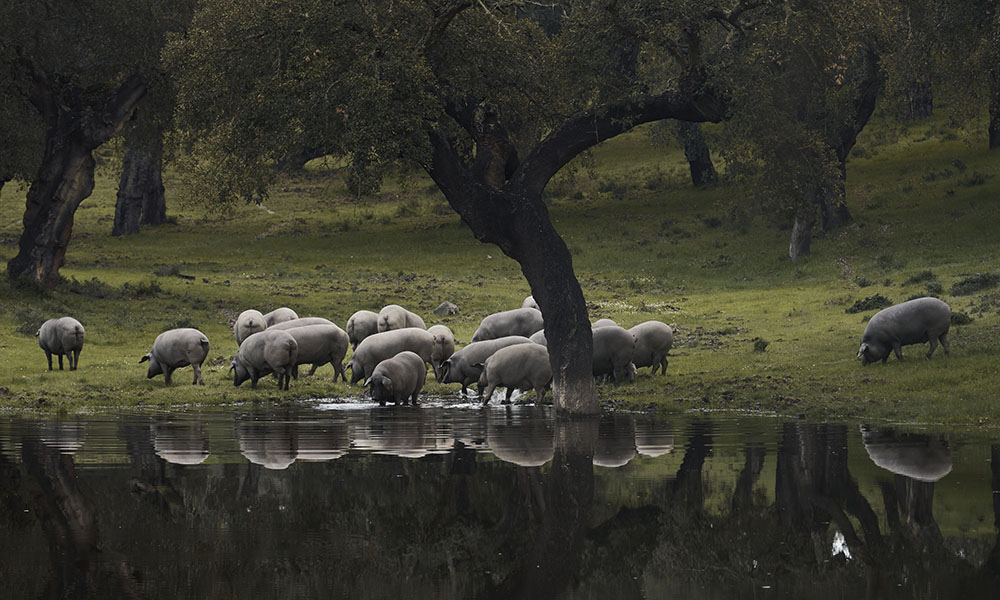At Ibérico Sense, we celebrate not just the flavor of jamón ibérico, but the centuries-old story behind every slice. This legendary delicacy traces its origins back to ancient Spain, where the unique ecosystem of the dehesa and the breed known as the Iberian pig created a culinary treasure unlike any other.
The Iberian pig, native to the Iberian Peninsula, thrives in the open woodlands of southwestern Spain and Portugal. These oak-filled pastures offer the perfect environment for acorn feeding, a crucial factor in developing the rich, nutty flavor that defines premium jamón ibérico de bellota.
The tradition of curing ham in Spain dates back to Roman times, but it was in the Middle Ages that the methods became more refined. Today, artisans still use natural salting, air-drying, and long maturation periods—sometimes up to four years—to achieve the exceptional texture and taste that have earned jamón ibérico a place among the world’s finest gourmet products.
Understanding the origin of jamón ibérico is key to appreciating its depth and complexity. It’s more than food—it’s a legacy of landscape, livestock, and love for craftsmanship.
Stay tuned to ibericosense.com as we continue to explore the people, places, and traditions behind Spain’s most iconic delicacy.

